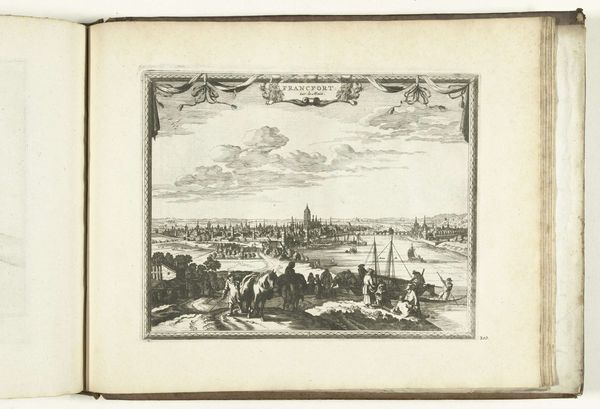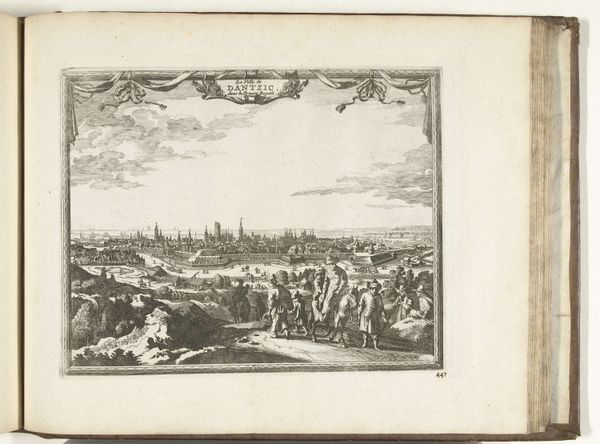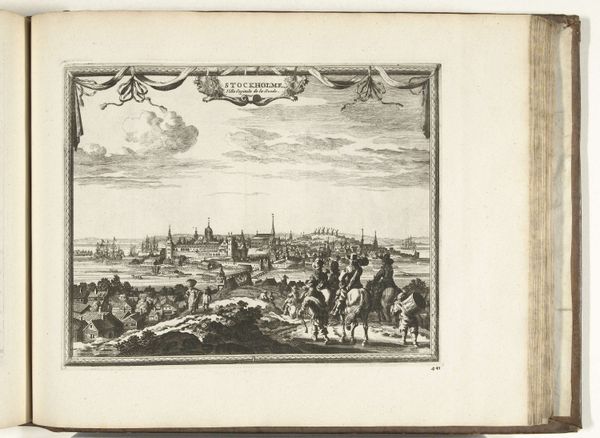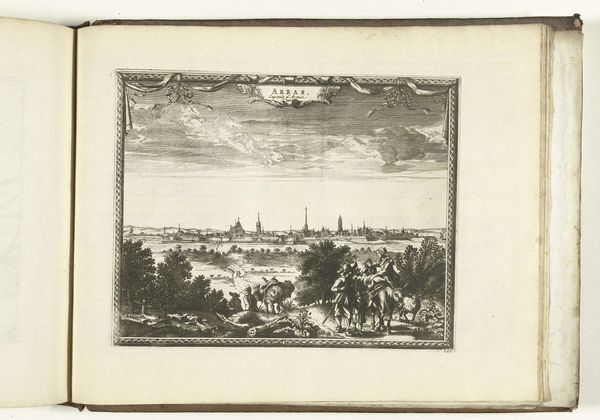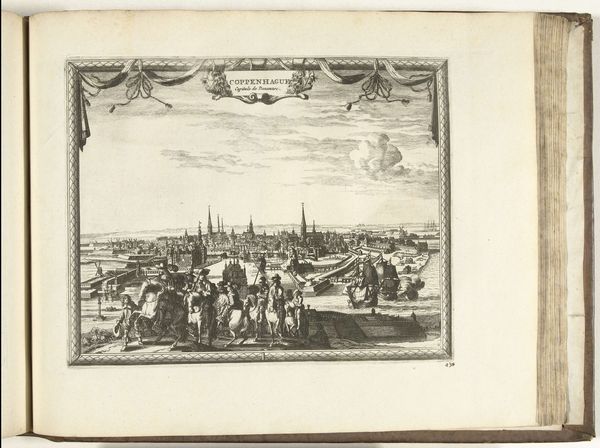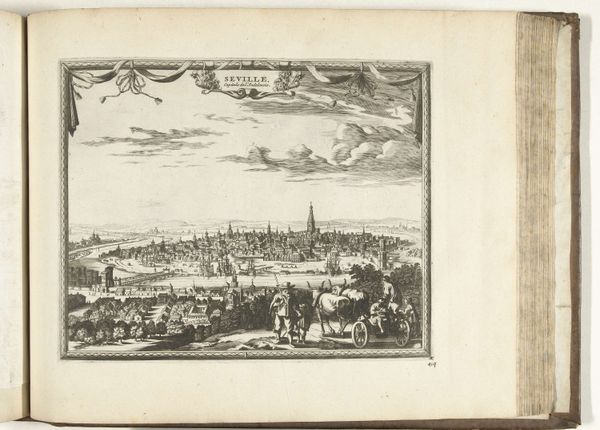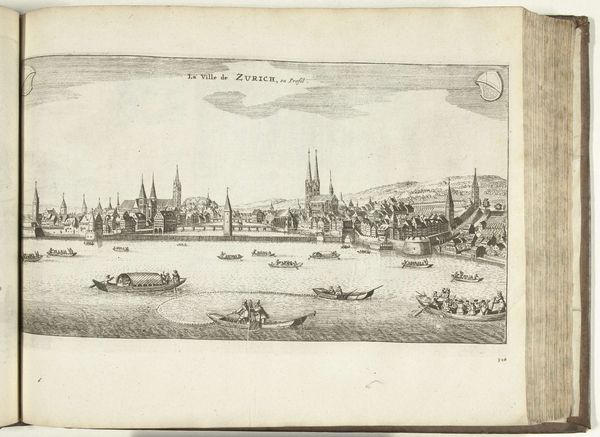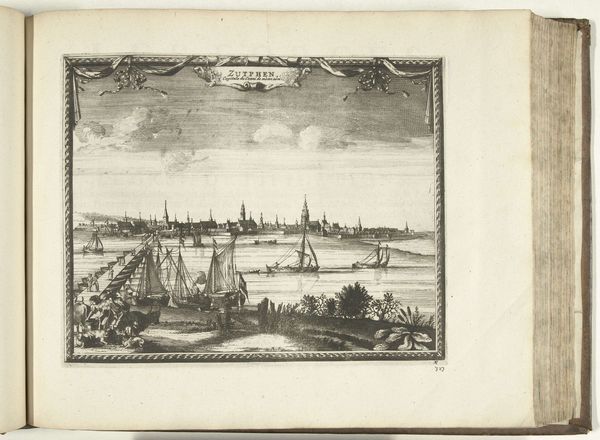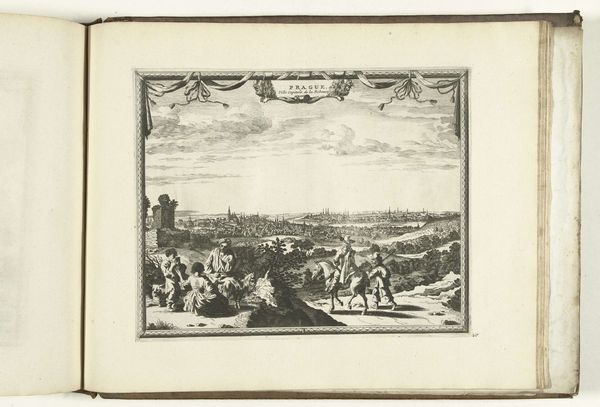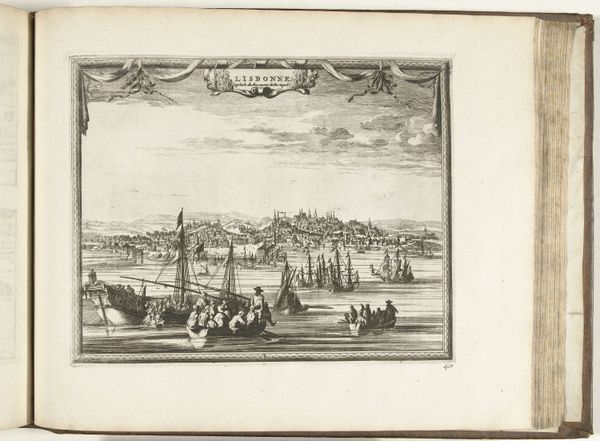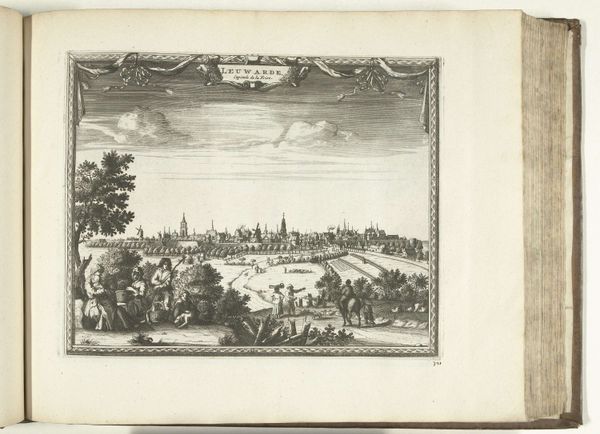
print, paper, engraving
#
baroque
# print
#
landscape
#
paper
#
line
#
cityscape
#
history-painting
#
engraving
Dimensions: height 218 mm, width 275 mm
Copyright: Rijks Museum: Open Domain
Editor: Here we have "Gezicht op Mainz," or "View of Mainz," an engraving on paper from 1726. What immediately strikes me is the incredibly fine line work used to create this panoramic cityscape. How do you approach interpreting a piece like this? Curator: Considering this print's production, we can think about how this image functions within a specific social and economic system. The detailed engraving, multiplied and disseminated, speaks to the rise of print culture. Its materiality – the paper, the ink, the engraved plate – and the labor involved, highlight a shift in how knowledge and representations of places were circulated. Was this print intended for a wealthy patron, a merchant, or a wider public audience? Editor: That’s a good question. The detail does suggest a wealthier buyer. But were prints like this also used for more practical purposes, say, in trade or urban planning? Curator: Precisely. The cityscape as a genre becomes incredibly popular. So thinking materially, these prints provided not just aesthetic pleasure, but also practical information. It may have also fueled trade and commerce in Mainz itself. This image both reflects and shapes the urban experience of its time. Look at the frame around the image. What do you think about it? Editor: I guess that I had assumed the frame was only there to delineate the image on the page. However, I see that it’s part of the plate itself. It feels so deliberate. Almost a sign of luxury, but maybe also simply to protect the image on the plate. Curator: Exactly. Everything you mentioned reveals social contexts related to this artwork. Perhaps it's the image as luxury object. Or perhaps it’s also meant for something much more ordinary, like framing the image’s subject to give a specific viewpoint of what one might think about when contemplating urban development. Editor: This really changes how I see this print. Thinking about the materiality and social context reveals so much more than just the image itself. Thanks for highlighting that! Curator: Absolutely! It’s about uncovering the stories embedded in the very substance of the artwork, shifting how we define labor and consumerism that underpins artistic creation itself.
Comments
No comments
Be the first to comment and join the conversation on the ultimate creative platform.
